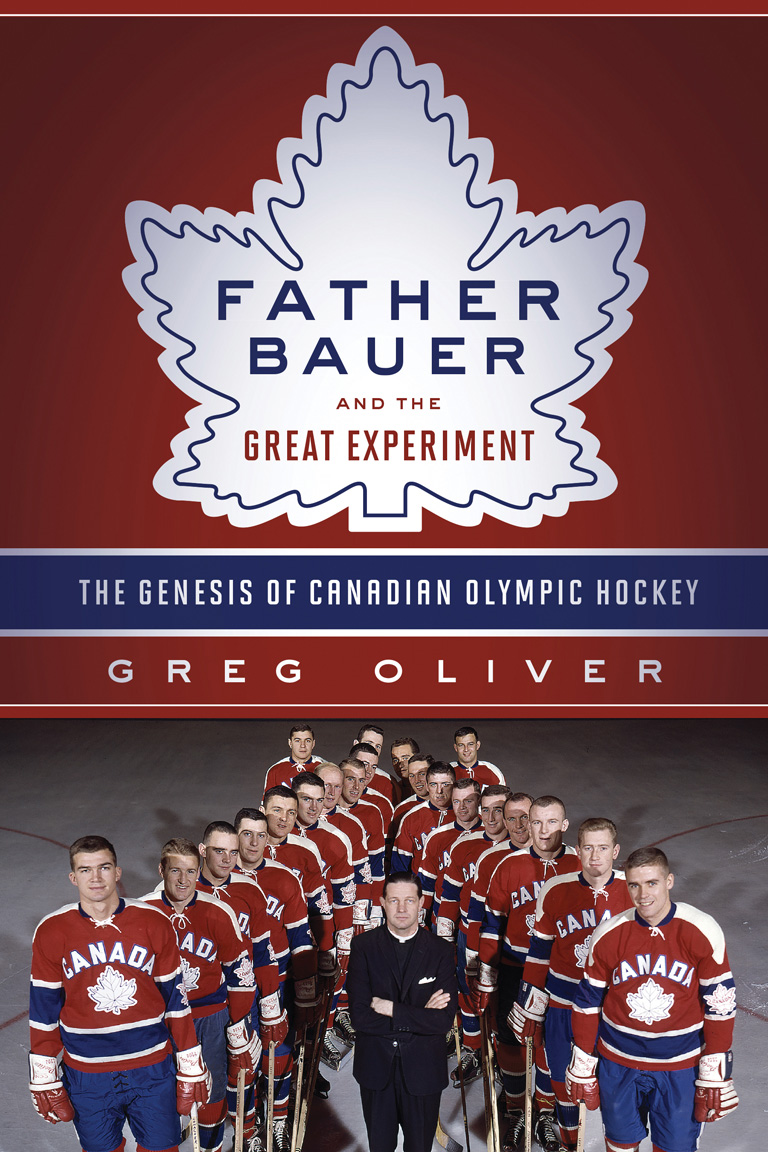Father Bauer and the Great Experiment

Father Bauer and the Great Experiment: The Genesis of Canadian Olympic Hockey
by Greg Oliver
ECW Press
320 pages, $32.95
Greg Oliver’s Father Bauer and the Great Experiment tells two intertwined stories. On one hand, it is a biography of Hockey Hall of Fame member Father David Bauer. Born in Kitchener, Ontario, in 1929, Bauer was a noted hockey talent in his younger days but turned down the opportunity to play professionally in order to join the priesthood. His older brother Bobby, also a member of the Hockey Hall of Fame, starred as a part of the Boston Bruins’ “Kraut Line.”
While joining the clergy brought his playing days to an end, David Bauer turned his attention to coaching and mentoring student athletes at his alma mater, St. Michael’s College School in Toronto. Noted for his emphasis on balancing athletics with student players’ scholastic responsibilities, he led the team to a Memorial Cup victory in 1961. The team was a veritable junior hockey powerhouse but was disbanded the following year, when it became apparent that league demands would make it increasingly difficult for players to maintain the necessary balance.
In 1962 Bauer transferred to St. Mark’s College, a theological school affiliated with the University of British Columbia in Vancouver. This is where the second component of the book emerges, as it picks up the story of the creation of Canada’s national hockey team. As it stood, Canada’s entries in the annual world championships and the quadrennial Winter Olympics were the defending Allan Cup champions — recipients of the prize awarded to the country’s top senior hockey club. With these amateur teams struggling against the rapidly improving entries from Europe, which often featured professional players, Bauer concluded that it would be in Canada’s best interests to create a national team that would train year-round and represent the country at international competitions. This idea was accepted by the governing Canadian Amateur Hockey Association, and in 1962 Bauer was given the Herculean task of assembling and running the team.
Here the book’s focus shifts to the many players who joined the national program over the next eighteen years. They were, in many respects, a ragtag group, made up of collegiate athletes, prospects who valued spending time playing for their country before turning pro, and occasional last-minute call-ups who would help the team out of a jam. Oliver writes in an engaging fashion, and his book features the voices of many of the national team’s former members. These include Ken Dryden, who suited up for two games following the conclusion of his collegiate career, before going on to great success in the National Hockey League.
Before Bauer’s death in 1988, he made it clear that he didn’t want to be posthumously lionized. Oliver nonetheless provides an interesting glimpse into the life of one of Canada’s remarkable, if overlooked, hockey figures. At the same time, his book is great for fans of international hockey — not only because it tells the origin story of the national team but also because it highlights the often-contemptuous relationship between European members of the International Ice Hockey Federation, including the group’s long-time president John “Bunny” Ahearne, and Canadian officials.
Hockey, for better or worse, is in a very different position than it was in the early 1960s. The NHL has grown tremendously from a league of six teams, and today’s teams ice lineups with not only Canadian- and American-born players but also a broad complement of Europeans. International tournaments typically feature best-versus-best lineups comprised entirely of professionals. As Father Bauer and the Great Experiment reminds us, these are fairly recent innovations. Oliver’s book lets us learn about yesteryear, when the Maple Leaf was proudly worn by amateurs whose love of sport and country was matched only by the Basilian Father behind the bench.
Themes associated with this article
Advertisement






